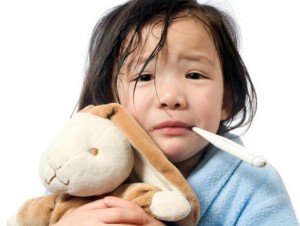
An increase in temperature in itself is not dangerous, and can often be treated at home. Fevers in children are not uncommon, and sometimes even after full examination there may be no reason found for a fever.
LOOKING AFTER A FEVERISH CHILD
Give the child plenty of drinks, such as water or squash. Give babies smaller but more frequent feeds. If you are breastfeeding then continue to do so.
Do not worry about food if the child does not feel like eating, but encourage them to drink more.
Signs of dehydration include dry mouth, lack of tears, sunken eyes or producing less urine. In babies, the soft spot on the head (fontanelle) may be sunken. If you notice any of these signs, seek further advice from your doctor or via 111.
Do not over- or under-dress a child with fever. Physical methods of cooling a child, such as fanning, sponging with tepid water etc are not advised.
It is not necessary to use medication to treat fever, but if the child is distressed paracetamol or ibuprofen can help them to feel better. Always follow the instructions on the bottle.
Check on your child regularly, including during the night, especially infants.
WHEN AND WHERE TO SEEK HELP
If the child
Becomes unresponsive
Struggles to breathe or becomes blue
Has a fit
Develops a rash that does not disappear if a glass is pressed firmly against it
CALL 999 OR GO STRAIGHT TO YOUR NEAREST ACCIDENT OR EMERGENCY DEPARTMENT.
Contact your GP or NHS111 if
The child’s health gets worse or you are worried
If the child develops signs of dehydration (dry mouth, no tears, sunken eyes, sunken fontanelle, reduced output of urine), is drowsy and seems generally unwell
A high temperature lasts more than 5 days and the child has not yet seen a health professional
If the child is less than 6 months old
